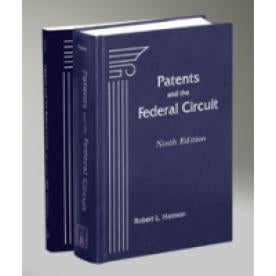Claim construction, the process by which a court interprets the scope and meaning of a patent’s claims, is a crucial part of patent litigation. In fact, claim construction can make or break a patentee’s case for infringement and/or validity.
A claim construction analysis begins with the words of the claim. Generally, the words of the claim are given their “ordinary and customary meaning,” as would be understood by a person of ordinary skill in the art in question at the time of the invention. In particular, the claim term should be construed in the light of the entire “intrinsic record” which consists of the claims, patent specification, and the prosecution history. The prosecution history of related U.S. applications having common claim terms and stemming from the same parent application can also be used.
In some cases, the court may use extrinsic evidence to help understand the claims. Extrinsic evidence includes expert testimony, the prior art, inventor testimony, dictionaries, and treatises or articles. Extrinsic evidence may not, however, be used to contradict the language of the claims, nor to overcome the intrinsic evidence as to the meaning of the claims.
While the prosecution history of related U.S. applications is a well-accepted as part of the intrinsic record, the use of prosecution history of related foreign patents is more nuanced. The Federal Circuit has recognized that when the prosecution history of a related foreign patent or patent application contains information relevant to determining the scope of patent claims or whether a claim is are infringed under the doctrine of equivalents, that information must be considered.1 Factors that make a related foreign prosecution statement relevant include:
-
if it was “‘made in an official proceeding in which the patentee had every incentive to exercise care in characterizing the scope of its invention;’”
-
if “the two patents are related and share a familial relationship;” and
-
if the foreign application contains a claim identical to the U.S. claim at issue at the time the statement was made.2
Even where the statements are made in a foreign application after grant of the U.S. patent, the statements may be relevant to claim construction.3
Nonetheless, the Federal Circuit has cautioned against indiscriminate reliance on foreign prosecution histories in claim construction. For example, where “evidence is, at best, equivocal” and “does not alter the clear import of the claim language, specification, and relevant extrinsic evidence,” the Federal Circuit declined to consider the foreign prosecution.4 The use of foreign prosecution is similarly not relevant when the statements were made in response to requirements that are unique to the foreign jurisdiction. Also, where a European examiner rejected the patentee’s arguments, and the patentee did not continue to use those arguments in the U.S. or Europe, “it was proper . . . to attribute little weight to the statements made to the European examiner.”5
During prosecution of U.S. patent applications, most patent attorneys and agents are aware of the effect their arguments may have on future litigation of a resulting patent. It is important to also carefully consider the arguments that are made by foreign practitioners in related applications in foreign jurisdictions. In addition, when looking to construe patent claims from a litigation or diligence perspective, foreign prosecution history could be an important repository for analysis. The Federal Circuit is clear that such arguments can be fair game in claim construction.
[1] Caterpillar Tractor Co. v. Berco, S.p.A., 714 F.2d 1110, 1116 (Fed. Cir. 1983) (citing Stratoflex, Inc. v. Aeroquip Corp., 713 F.2d 1530); see also, Tanabe Seiyaku Co., Ltd v. U.S. I.T.C., 109 F.3d 726, 733 (Fed. Cir. 1997).
[2] Apple Inc. v. Motorola, Inc., 757 F.3d 1286, 1313 (Fed. Cir. 2014) (quoting Microsoft Corp. v. Multi-Tech Sys., Inc., 357 F.3d 1340, 1350 (Fed. Cir. 2004)).
[3] Apple Inc. v. Motorola, Inc. at 1312.
[4] AIA Eng’g Ltd. v. Magotteaux Int’l. S/A, 657 F.3d 1264, 1279 (Fed. Cir. 2011).
[5] Tap Pharmaceutical Products, Inc. v. Owl Pharmaceuticals, L.L.C., 419 F.3d 1346, 1350 (Fed. Cir. 2005).





 i
i


